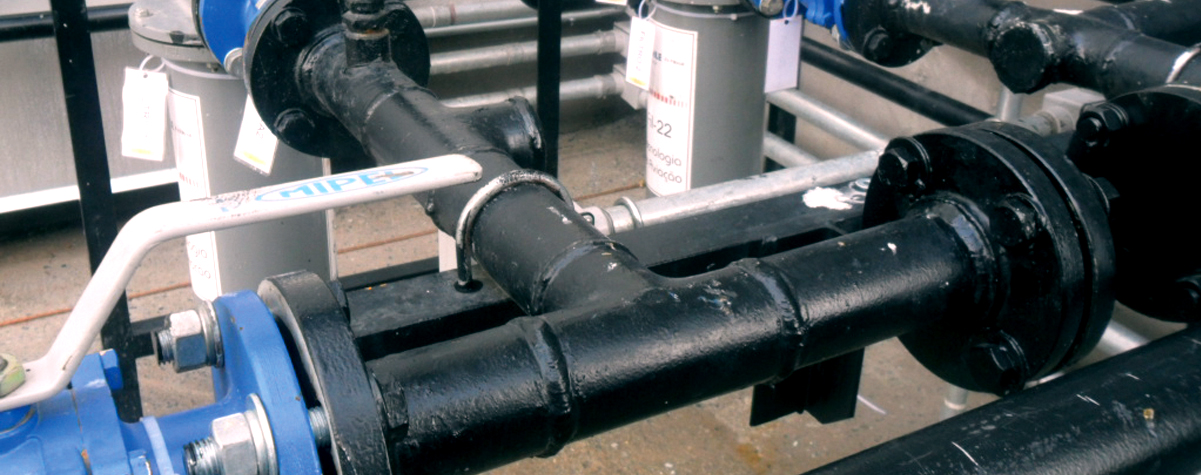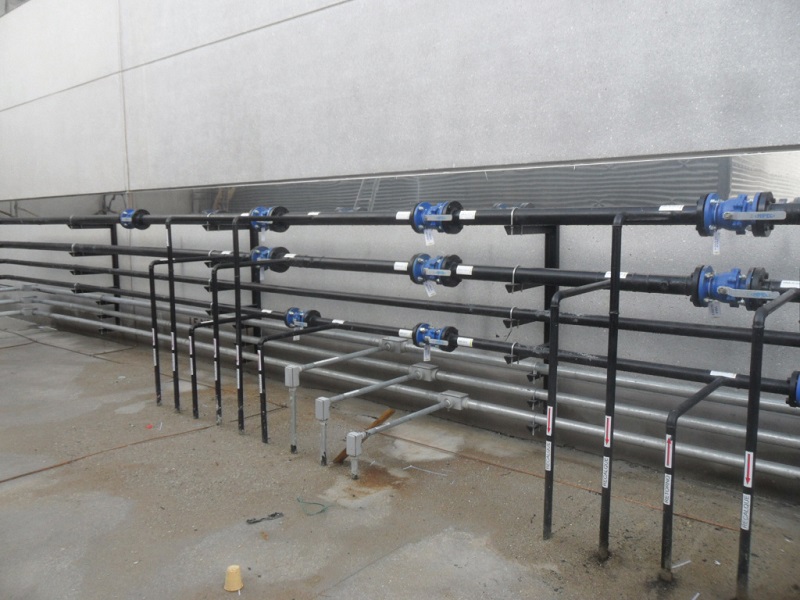Fuel System Design and Reliability
Topology and operational sustainability considerations must drive fuel system design.
When Superstorm Sandy hit the Northeastern U.S., some data center owners and operators discovered that they hadn’t considered and treated their fuel systems as part of a mission-critical system. In one highly publicized story, a data center operator in New York City was forced to use a “fuel bucket brigade,” moving fuel by hand up 18 stories for 48 hours. The brigade’s heroics kept the data center online, but thoughtful design of the fuel topology would have led to better operational sustainability. Superstorm Sandy taught many other New York and New Jersey data center owners that fuel system planning is essential if critical power is to be maintained in an emergency.
Uptime Institute has observed that designers may not be well versed in fuel solutions for data centers. Possible explanations include the delegation of the fuel system design to a fuel or engine generator supplier and a focus on other systems. As a critical system, however, fuel systems require all the consideration paid to the topology of other data center subsystems from data center designers and owners, with integration of Operational Sustainability principles to ensure high availability.
Tier Topology of Fuel Systems
Recall that the Tier Standard is based on the resiliency of the lowest-rated data center subsystem. The topology of the fuel system includes paths of fuel distribution and each and every fuel component, all of which must correspond to the Tier objective of the data center. For Tier III and Tier IV data centers, the path of fuel supply and potentially the return lines must be either Concurrently Maintainable or Fault Tolerant. The fuel system components—namely pumps, manual valves, automated valves, control panels, bulk tanks and day tanks – all must meet either the Concurrently Maintainable or Fault Tolerant objective.
Determining whether a fuel system is Concurrently Maintainable or Fault Tolerant means that it must be evaluated in the same way as the chilled-water schematic or an electrical one-line drawing, starting from a given point – often the bulk storage tanks—and methodically working through the paths and components to the fuel treatment supplies and day tanks. Removing each component and path reveals points in the system where “N,” or the needed fuel flow and/or storage, are unavailable.
Tier Topology Fuel Requirement
The Uptime Institute Owners Advisory Committee defined 12 hours of minimum fuel storage as a starting point for Tier-defined data centers. The Tier Standard: Topology requires this 12-hour fuel storage minimum for all Tiers at 12 hours of runtime at “N” load while meeting the facility’s stated topology objective. Put another way, the fuel storage must be adequate to support the data center design load for 12 hours while on engine generators while meeting the Concurrently Maintainable or Fault Tolerant objective. Exceeding the 12-hour minimum is an Operational Sustainability issue that requires careful analysis of the risks to the data center energy supply.
Fuel Storage Topology
Many owners reference the amount of fuel on hand based on total capacity. Just as with engine generators, chillers and other capacity components, the true fuel storage capacity is evaluated by removing the redundant component(s). A common example is an owner’s claim of 48 hours of fuel; however, the configuration is two 24-hour tanks, which is only 24 hours of Concurrently Maintainable fuel. The amount of Concurrently Maintainable or Fault Tolerant fuel establishes the baseline as the amount always available, not the best-case scenario of raw fuel storage.
Common fuel system design discrepancies in Tier III and Tier IV systems include:
- The fuel system valving and piping does not match the Concurrently Maintainable objective. An example of the most common fuel error is a single valve between two pumps or storage tanks when using an N+1 configuration, which cannot be maintained without shutdown of more than the redundant number of components.
- The power to fuel pumps and fuel control panels is not Concurrently Maintainable or Fault Tolerant. A single panel or single ATS feeding all fuel pumps is a common example. The entire power path to fuel pumps and controls must be Concurrently Maintainable or Fault Tolerant.
- Depending on the topology of the fuel system (constant flow, etc.), the return fuel path may be critical. If the fuel supply is pressurized or part of a continuously functioning return system from the day tanks to the bulk tanks, the return path must meet the Concurrently Maintainable or Fault Tolerant objective.
- The fuel control system is not Concurrently Maintainable. A fuel control panel may be replicated or a method of manual fuel operations must be available in case of maintenance or replacement of the fuel control panel. In this case, the manual method must be a designed and installed methodology.
Other considerations include fuel cooling, the fault tolerance of fuel systems and fuel type.
The internal supply pumps of most engine generators continuously oversupply diesel to the engine generator and return superheated diesel fuel to the day tank. During extended operations or during high ambient temperatures, it is possible to overheat the day tank to such an extent that it reduces engine generator power or even causes thermal shutdown of the unit. There are two primary ways to prevent fuel overheat:
- Recirculating day tank fuel to the underground bulk tank. This system utilizes the thermal inertia of the underground system with little or no bulk tank temperature change. Of course, the return path is a critical element of the fuel system and must meet all the same Tier criteria.
- Specifying a fuel cooler as part of the engine generator package. Fuel coolers function well as long as their net power impacts on the engine generator are considered and the fuel cooler is confirmed to function at extreme ambient temperatures.
Tier IV requires autonomous response to failure, which encompasses the ability to detect a fault, isolate the fault and sustain operations with alternate systems. The simple test of Fault Tolerance for fuel is that “N,” or the needed amount of fuel for the data center, is available after any failure. Some failure scenarios of fuel systems include loss of power, leaks, failure of components or fire. Leak detection of fuel systems is crucial to Fault Tolerance. Fault detection may be achieved using a variety of methods, but the chosen method must be integrated with the system response to isolate the fuel leak. The isolation must limit fuel loss such that the ability of alternate systems to deliver “N” fuel is not impacted.
Tier IV also requires the compartmentalization of fuel systems. Compartmentalizing complementary systems within separate spaces limits the damage of a single catastrophic event to a single fuel system. This includes fuel lines, fuel controllers, fuel pumps and all types of fuel tanks.
Owners considering propane or natural gas to feed either gas turbines or more recent innovations such as fuel cells face additional fuel considerations.
Tier topology views gas supply lines as a utility similar to water or electricity. Thus, as a utility, a minimum of 12 hours of gas is required to be stored on-site in a manner consistent with the site’s Tier design objective. The result is one or more large gas tanks for storage. While Tiers allow this solution, not many jurisdictions have shown tolerance for large gas storage under local or national code. And, from an Operational Sustainability perspective, multiple large gas tanks could be an explosion hazard. Explosion risk may be mitigated but certainly is a major design consideration.
Fuel System Design Impacts to Operational Sustainability
Operational Sustainability defines the behaviors and risks beyond Tier Topology that impact the ability of a data center to meet its business objectives over the long term. Of the three elements of Operational Sustainability, the data center design team influences the building characteristics element the most. An improperly designed fuel system can have serious negative Operational Sustainability impacts.
Sustainability Impacts
Recent weather and disaster events have shown that planning for more extreme circumstances than previously anticipated is being realized. Properly designed fuel storage can mitigate the operational risks related to long-term outages and fuel availability caused by disaster. Some questions to ask include:
- What is the owner’s business continuity objective and corporate policy?
- How will the data center operator manage the bulk fuel on hand?
- What is the site’s risk of a natural disaster?
- What is the site’s risk of a man-made disaster?
- What fuel service can be provided in a local disaster, and can local suppliers meet fuel requirements?
- What fuel service can be provided in a regional emergency, and within what time period?
The answers to questions about fuel storage requirements can come from dialogue with the data center owner, who must clearly define the site’s autonomy objective. The design team can then apply the Tier topology along with Operational Sustainability risk mitigation to create the fuel storage and delivery system.
Operational Sustainability is about mitigating risks through defining specific behaviors. Human error is one of the biggest risks to operations. In order to mitigate the human factor, the design of infrastructure, including fuel, must incorporate simplicity of design and operations. In essence, the design must make the fuel system easier to operate and maintain. Fuel distribution isolation valves and control systems must be accessible. Underground vaults for fuel systems should be routinely accessible and provide adequate space for maintenance activities. Fuel tank site glasses located in readable locations can provide visual clues of infrastructure status, confirm fuel levels and give operators direct feedback before the start of maintenance activities.
Fuel treatment is not required by Tier topology, but it is certainly an important Operational Sustainability site characteristic. Diesel fuel requires regular management to remove water, algal growth and sediment to ensure that engine generators are available to provide power. Permanently installed fuel treatment systems encourage regular fuel maintenance and improve long-term availability. Local fuel vendors can help address local concerns based on diesel fuel and climate. Finally, the Institute encourages designers to integrate fuel treatment systems carefully to ensure that the Tier objective is not compromised.
The Institute has seen a growing use of engine generators in exterior enclosures with fuel systems located outside. Physical protection of these assets is an Operation Sustainability concern. With the level of investment made in data center infrastructure, designers must prevent weather and incidental damage to the fuel and engine generator systems. Protecting fuel lines, tanks and engine generators from errant operators or vehicles is paramount; bollards or permanent structures are good solutions. The fuel system must consider Operational Sustainability to achieve high availability. Simplicity of design and consideration of operations can be the most effective long-term investment in uptime. Analysis of Operational Sustainability risks with appropriate mitigations will ensure uptime in an emergency.
Summary
Fuel systems must match the topology objective set for the entire facility. The chart outlines the benefits, drawbacks and Operational Sustainability considerations of different fuel solutions.
 Keith Klesner’s career in critical facilities spans 14 years and includes responsibilities ranging from planning, engineering, design and construction to start-up and ongoing operation of data centers and mission-critical facilities. In the role of Uptime Institute vice president of Engineering, Mr. Klesner has provided leadership and strategic direction to maintain the highest levels of availability for leading organizations around the world. Mr. Klesner performs strategic-level consulting engagements, Tier Certifications and industry outreach—in addition to instructing premiere professional accreditation courses. Prior to joining the Uptime Institute, Mr. Klesner was responsible for the planning, design, construction, operation and maintenance of critical facilities for the U.S. government worldwide. His early career includes six years as a U.S. Air Force officer. He has a Bachelor of Science degree in Civil Engineering from the University of Colorado-Boulder and a Masters in Business Administration from the University of LaVerne. He maintains status as a professional engineer (PE) in Colorado and is a LEED-accredited professional.
Keith Klesner’s career in critical facilities spans 14 years and includes responsibilities ranging from planning, engineering, design and construction to start-up and ongoing operation of data centers and mission-critical facilities. In the role of Uptime Institute vice president of Engineering, Mr. Klesner has provided leadership and strategic direction to maintain the highest levels of availability for leading organizations around the world. Mr. Klesner performs strategic-level consulting engagements, Tier Certifications and industry outreach—in addition to instructing premiere professional accreditation courses. Prior to joining the Uptime Institute, Mr. Klesner was responsible for the planning, design, construction, operation and maintenance of critical facilities for the U.S. government worldwide. His early career includes six years as a U.S. Air Force officer. He has a Bachelor of Science degree in Civil Engineering from the University of Colorado-Boulder and a Masters in Business Administration from the University of LaVerne. He maintains status as a professional engineer (PE) in Colorado and is a LEED-accredited professional.








 UI 2021
UI 2021 Getty Images
Getty Images

